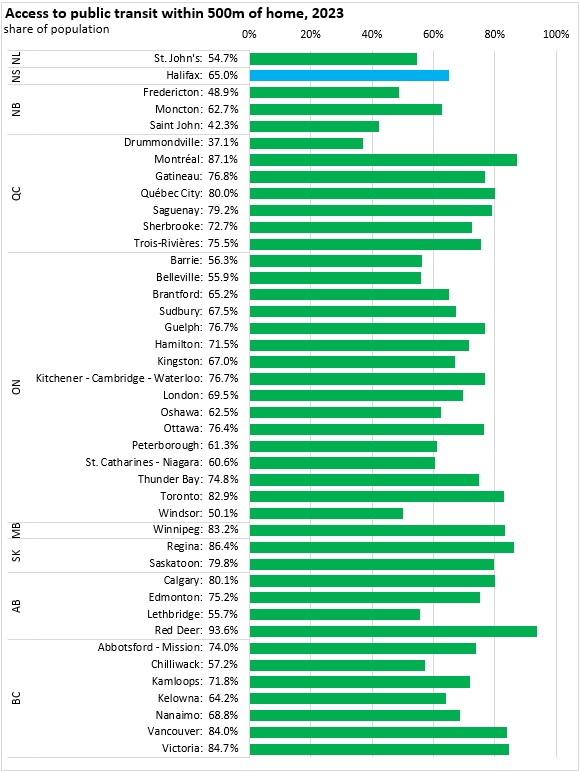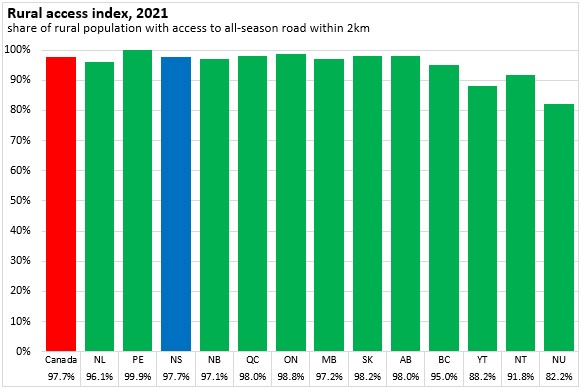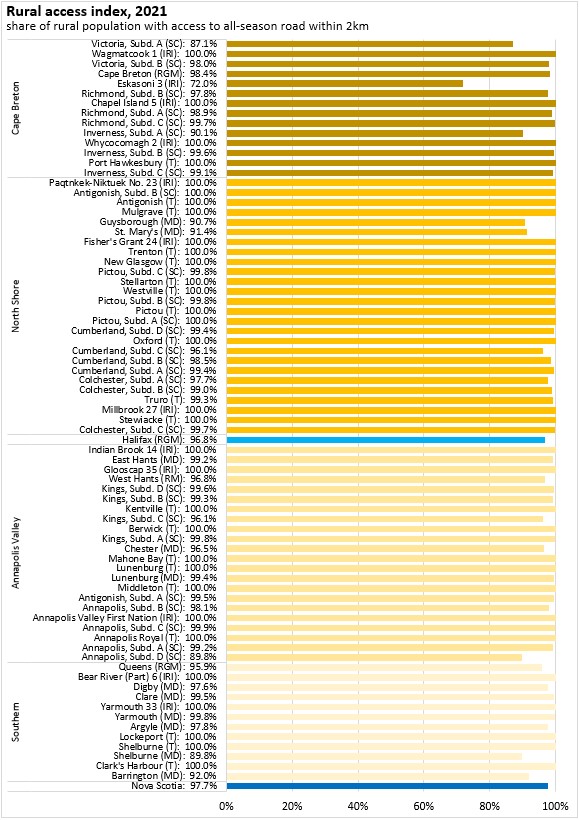The Economics and Statistics Division maintains archives of previous publications for accountability purposes, but makes no updates to keep these documents current with the latest data revisions from Statistics Canada. As a result, information in older documents may not be accurate. Please exercise caution when referring to older documents. For the latest information and historical data, please contact the individual listed to the right.
<--- Return to Archive
For additional information relating to this article, please contact:
July 11, 2023ACCESS TO TRANSIT AND RURAL ROADS Statistics Canada's geographic information allows assessment of the share of the population (as reported on the 2021 Census) that has access to either public transit or roads in rural areas.
Urban areas: access to transit within 500m
Almost two-thirds (65.0%) of Halifax's population had access to public transit within 500 metres of home. This was the highest share among the urban areas of the Atlantic region, but lower than transit access reported for urban areas of the prairie provinces as well as most cities in Québec, Ontario and British Columbia.
Urban access to transit was highest in Red Deer as well as in Montréal, Regina, Victoria, Vancouver, Winnipeg, Toronto, Calgary and Québec City (all reporting at least 80% of the population within 500 metres of public transit).

Rural areas: access to all-season road within 2km
For residents outside population centres, access to transportation means all-season roads. Statistics Canada's rural access index measures the share of a rural area's population that lives within 2 kilometres of an all-season road. In Nova Scotia, 97.7% of rural residents lived within 2 kilometres of an all-season road. This was the same as the national average. Across all provinces, over 95% of populations had access to an all-season road within 2 kilometres of home. In the territories, access to all-season roads was lower, particularly for Nunavut (82.2% of the population).

Within Nova Scotia, the population of most census subdivisions had 100% or nearly 100% access to all-season roads. The exceptions were: Eskasoni, Victoria County subdivision A, Inverness County Subdivision A, Guysborough Municipal District, St. Mary's Municipal District, Annapolis County Subdivision D, Shelburne Municipal District and Barrington Municipal District.

Source: Statistics Canada. Table 23-10-0310-01 Rural Access Index by geography; Table 23-10-0311-01 Convenient access to public transport by geography, gender, age, income after tax
<--- Return to Archive